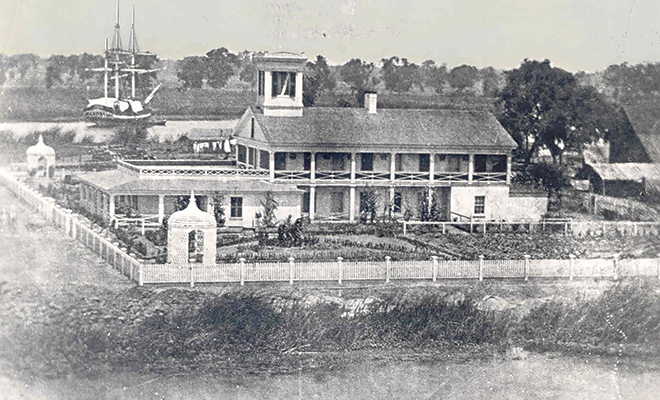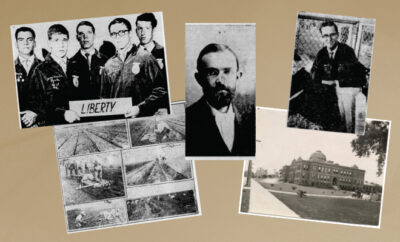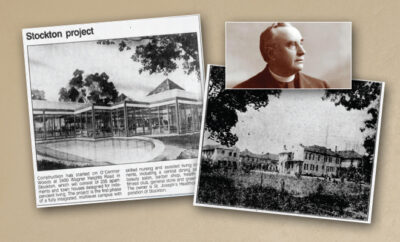
Stockton’s First House: Weber Cottage
Story by Jack Jacobs, Docent
Photos courtesy of the San Joaquin County Historical Museum
When Julia Weber built her house at Weber Point on the Stockton Channel in 1892, she made sure it had a connecting corridor to her father’s 1847 cottage that she used for her kitchen and dining room. Both houses have been gone from downtown Stockton for a long time now, but they have found new homes on the campus of the San Joaquin County Historical Museum at Micke Grove Park.
The connecting corridor is long gone, with only a pond, a levee and short expanse of hardpan separate the former homes of Stockton’s founder, Captain Charles Weber, and his only daughter.
The Weber Cottage is the oldest wood-framed building in San Joaquin County. It was moved to the museum grounds on November 9, 1984, and it’s easily accessed from the museum’s Sunshine Trail, a meandering stroll past “talking benches” strategically placed along the way for visitors to sit and listen to how Stockton’s first house came to be.
In 1847 there were no lumber mills in the Sierra Nevada and no wagon roads that would allow lumber to be brought down to Stockton. Captain Weber turned to the Woodside area of the Santa Cruz Mountains, where two lumber mills already operated. The harvested redwood was then brought by oxcart to Redwood City on San Francisco Bay and then barged up the San Joaquin River and the Stockton Channel to Weber Point. Here Captain Weber built his house and store that served him so well after gold was discovered at Sutter’s Mill in Coloma on January 24, 1848. A talking bench on the trail near the museum’s Dry Gulch Mining Camp tells the story of Gold in the Mines and how Weber and his house benefited from the discovery.
In 1850, when the captain married Helen Murphy, he built a new house attached to the cottage for his new bride. The floods of 1861 and 1880 so decimated the two-story adobe that its walls had to be braced. Eleven years after the Captain’s passing in 1881, Julia and her brother Charles Weber II had a new two-story Victorian built on Weber Point using the glass, doors and windows from the family’s original adobe structure. It was here that Julia lived until the turn of the century.
In 1900, Julia decided to move her entire house and cottage by Holt steam tractors to property she owned on West Lane just north of the Calaveras River. That is where she lived until her death in 1935. In memory of her mother, she christened the estate Helen’s Oaks, the name a subdivision on that site retains to this day.
On June 30, 2001, Julia’s house moved again, this time to the northern end of the San Joaquin County Historical Museum campus, just a long stone’s throw from her father’s original cottage. The interiors of both homes are closed to the public except for the weekend of the museum’s Festival of Trees, when the inside of the Weber Cottage is decorated for the holidays with the captain’s original Christmas ornaments, and museum docents regale visitors with stories of the Weber family and the houses they called home so long ago.
The outside of Julia’s house has been completely restored and repainted to its 1901 gray. Her furniture, displayed in the Weber galleries of the museum’s Erickson Building, include a recreation of her bedroom complete with her chamber pot, a nod to the fact her home had no indoor plumbing until after she passed away.










